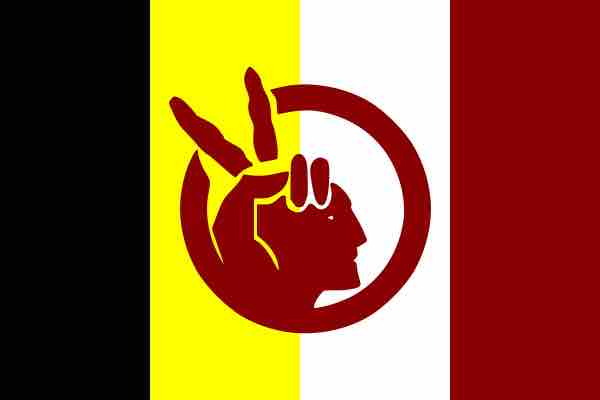American Indian Civil Rights in the 1960s
The movement for American Indian rights in the 1960s centered around the tension between rights granted via tribal sovereignty and rights that individual American Indians retain as U.S. citizens. Many of the demands of the movement related to the U.S. government's obligation to honor its treaties with the sovereign American Indian nations.
In 1965, the Voting Rights Act put an end to individual states claims on whether or not American Indians were allowed to vote through a federal law. Before the Voting Rights Act, many states had found ways to prevent American Indians from voting, such as residency or literacy requirements. On March 6, 1968, President Lyndon Johnson signed Executive Order 11399, establishing the National Council on Indian Opportunity (NCIO). With the passage of the Indian Civil Rights Act (ICRA) in 1968, also called the Indian Bill of Rights, American Indians were guaranteed - at least on paper - many civil rights.
After decades of unequal schooling between American Indian children and white children, often stemming from racist policies and insufficiently funded schools, the National Indian Education Association (NIEA) was formed in 1969 to fight for equal education for American Indians. American Indian activists at this time also strove for media protection and to own their own media. One of the primary advocacy organizations for American Indian Rights, the American Indian Movement (AIM), was also formed during the 1960s.
Alcatraz Occupation: Catalyst for the Formation of AIM
For 19 months, from November 20, 1969 to June 11, 1971, the group Indians of All Tribes (IAT) occupied the Alcatraz penitentiary off the coast of San Francisco. The occupation was forcibly ended by the U.S. government. According to the IAT, the Treaty of Fort Laramie (1868) between the U.S. and the Sioux should have returned all retired, abandoned, or out-of-use federal land to the American Indian people from whom it was acquired. Since Alcatraz penitentiary had been closed on March 21, 1963, and the island had been declared surplus federal property in 1964, a number of activists felt the island qualified for reclamation. In 1970, the Occupation of Alcatraz was noted as "the symbol of a newly awakened desire among Indians for unity and authority in a white world."

Occupation of Alcatraz
A lingering sign of the 1969-71 American Indian occupation of Alcatraz; above a federal sign reading "UNITED STATES PENITENTIARY: ONLY GOVERNMENT BOATS PERMITTED..." the words "INDIANS WELCOME" are painted in red.
The American Indian Movement (AIM)
The American Indian Movement (AIM) is an activist organization in the United States founded in 1968 in Minneapolis, Minnesota, by urban American Indians. The AIM agenda focuses on spirituality, leadership, and sovereignty. The organization was formed to address various issues concerning the American Indian urban community in Minneapolis, including poverty, housing, treaty issues, and police harassment. From its beginnings in Minnesota, AIM soon attracted members from across the United States. At a time when peaceful sit-ins were a common protest tactic of the African American civil rights movement, the AIM takeovers in their early days were noticeably violent. Some appeared to be spontaneous outcomes of protest gatherings, while others included armed seizure of public facilities.

American Indian Movement
The flag and symbol of the American Indian Movement contained four vertical stripes (black, yellow, white, and red) with a red symbol in the middle.
The Trail of Broken Treaties
In 1972, AIM activists marched across the country on what was called the Trail of Broken Treaties. The activists took over the Bureau of Indian Affairs (BIA), occupying it for several days and causing millions of dollars of damage. During this time, AIM developed and publicized a 20-point list to summarize its issues with federal treaties and promises.
The list addressed the failed responsibilities of the U.S. government and demanded the restoration of the 110 million acres of land taken away from Native Nations by the U.S.; the restoration of terminated Native Nation rights; the abolition of the Bureau of Indian Affairs; the establishment of immunity of Native Nations from state commerce regulation, taxes, and trade restrictions; the protection of American Indian religious freedom and cultural integrity; and affirmation of the health, housing, employment, economic development, and education for all American Indian people.
The Longest Walk
The Longest Walk in 1978 was an AIM-led spiritual walk across the country to support tribal sovereignty and bring attention to 11 pieces of anti-Indian legislation. The first walk began on February 11, 1978, with a ceremony on Alcatraz Island, where a Sacred Pipe was loaded with tobacco and carried the entire distance. This 3,200-mile walk's purpose was to educate people about the U.S. government's continuing threat to tribal sovereignty; it rallied thousands representing many American Indian Nations throughout the United States and Canada.